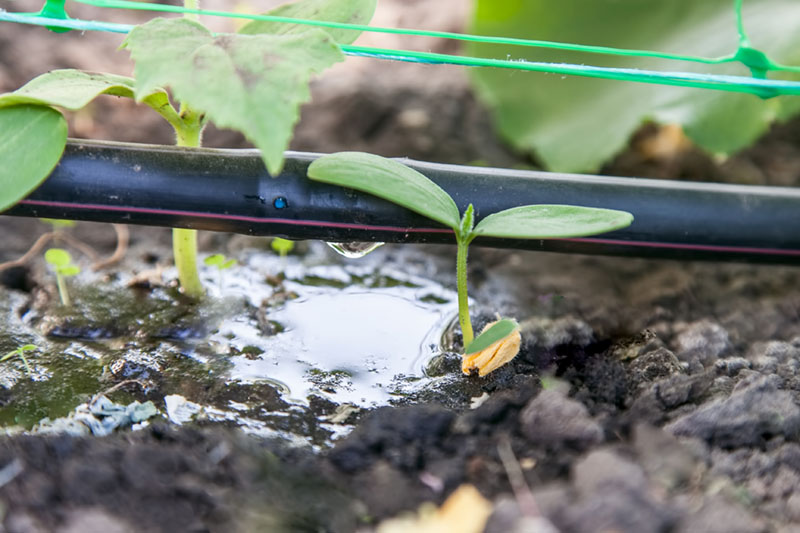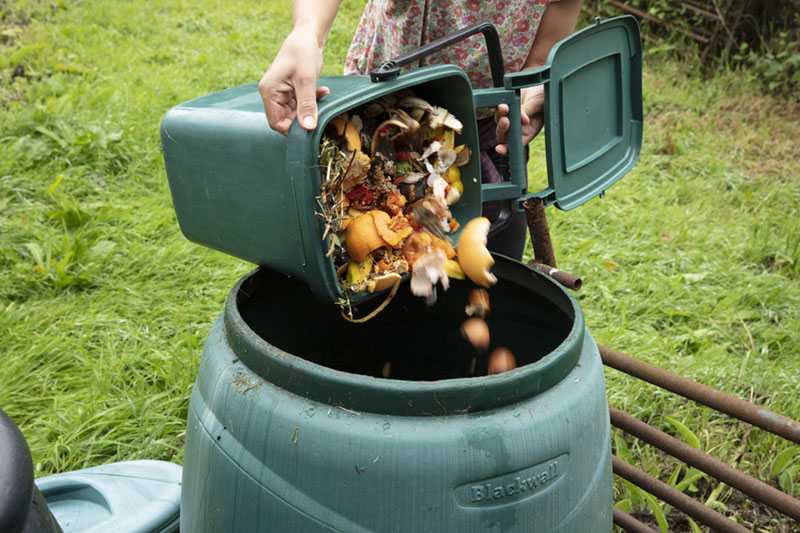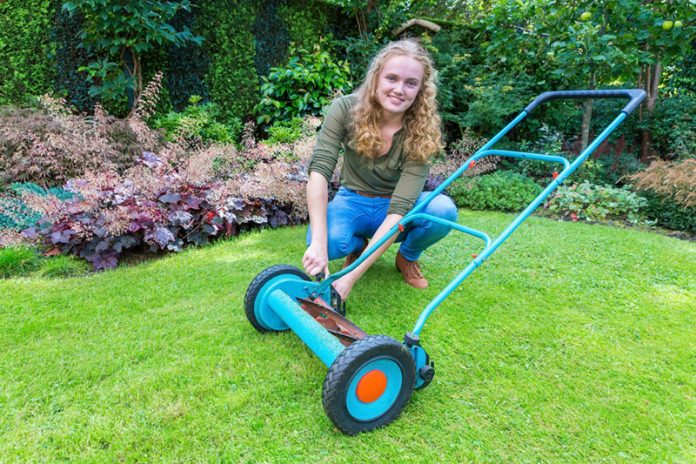The mercury is on the rise and with it comes the excitement for all that spring and summer will bring. For most of us, this means getting outside and into our gardens, and while this can be a fun way to support our environment, it can also take its toll. Lush green grass looks great, but can take its toll on your wallet—in fact, you might find yourself spending an average of $50-156 a month just to water your lawn!
And it’s not just your utility bill that will hurt. It’s important to remember that water is a finite resource and that ineffective watering methods can end up harming ecosystems, our food supply, and our ability to access clean drinking water. According to the EPA, as much as 50% of the water used outdoors is wasted due to inefficient watering methods. It’s clear that some water-saving lawn and garden tips are essential, so here are 15 of them.
15 Water-Saving Lawn and Garden Tips
1. Plant Native Species
Native plants are those that have spent a long time becoming acclimated to your region’s climate and weather patterns. Technically speaking, native plants are those that have existed in the United States prior to European settlement. Over time, they have developed improved capabilities for storing water and have been adapted to tolerate periods of drought (or conversely, heavy rainfall).
Particularly in areas prone to high temperatures and little rainfall, native plant species are some of the best ways to not only minimize water requirements but also deal with a changing climate.
2. Minimize the Size of Your Lawn
It should come as no surprise that a smaller lawn requires less water. If you’ve got a big backyard that becomes filled with dry, brittle grass by mid-August, consider minimizing the amount of grass you have.
You can do this by installing a deck, patio, pool, pathway, or even some perennials, shrubs, or ornamental grasses.
3. Use Mulch
By mid-summer, mulch will be your best friend. Not only does it look aesthetically pleasing, but it’s also a great way to help you conserve water. Mulch acts as a barrier that minimizes evaporation and reduces exposure to wind, allowing water to penetrate deeper into the roots of your plants, flowers, or vegetables.
Additionally, it will also help to cool the temperature of the soil during summer, and insulate it over winter. Not only that, but in the case of organic mulch, it is also an effective way to help build healthy soil!
4. Water at the Right Time
It’s likely that you’re thirstiest during the middle of the day when the sun is high in the sky, and while this may be also true for your plants, this is actually the worst time to give them water. In the heat of the day, any water that you provide will likely be quickly evaporated.
That being said, it’s much better to plan time in the morning to water your garden—generally speaking, between 4 AM and 9 AM is the best time. If morning isn’t possible, early evening is the second best option (although it may increase your risk for fungal growth).
5. Mow the Lawn Properly
When we think of shade, we might be quick to think of tall trees. However, shade can happen at a much smaller scale, too. In fact, you can cut your grass in such a way that it can provide shade for itself.
Instead of scalping your lawn and cutting it short, try to mow at a height that’s a bit taller, between 3 to 4 inches. This will allow the root system to grow deeper, providing it with greater access to water and nutrients. In turn, this will support the grass when it’s exposed to heat or drought. Plus, longer grass simply feels better during a barefoot wander around the garden!
Pro Tip: You can also leave the grass clippings on your lawn after mowing, They will work similar to mulch in minimizing evaporation and will also provide beneficial nutrients back into the soil.
6. Install a Drip Irrigation
If adhering to a watering schedule or remembering to water at all sounds like it could be a challenge, installing a drip irrigation system is a good alternative. While the installation process might take the better part of an afternoon or weekend, it will pay off for many years to come. 

On average, a drip irrigation system can minimize water use by 30 to 70%. This is because a drip irrigation system will direct water to directly where it’s needed (i.e. the roots of your plants). This means less runoff, less watering, less weeds, less waste, and healthier plants.
7. Use Permeable or Porous Materials
If you have surfaces like a patio or driveway where rainwater runoff is common, using permeable pavers or a porous hardscape (stones or brick laid over a bed of sand) can provide a low-maintenance way to allow water to drain freely into the ground, and near the areas of your garden that need it!
8. Incorporate a Rain Garden
Another (more beautiful) way to minimize runoff is to incorporate a rain garden into your outdoor space. If you have a roof that becomes flooded with water after a storm or notice runoff from a surface (like a driveway), a rain garden can help to slowly filter that water back into your garden—and it will filter out pollutants and provide a habitat for wildlife.
The EPA has provided a guide to rain gardens for most U.S. states.
9. Use Technology
Technology has made its way into our gardens. You can make use of gadgets like a water timer (irrigation timer or sprinkler timer), which waters your lawn automatically. In some cases, they can even detect the weather to provide just the amount of water needed—making adjustments based on periods of heavy rainfall.
If you’re not quite so tech-savvy, you can also use a manual rain gauge to measure fallen rain—and the knowledge that most plants will need about an inch of water every week.
10. Recycle Household Greywater
Either manually by using buckets or jugs, or through an installed greywater system, you can make use of the water that runs out of your sink, shower, and even washing machine to use it in your garden.
At the very least, use an old gallon milk jug to capture the water from your sink as you wait for it to heat or cool!
11. Use the Right Containers
If you’ve got some container plants, stick with glazed terra cotta as these will reduce the amount of water that escapes out of the containers, allowing you to go longer between waterings.
12. Harvest Rainwater
A popular question has been making its way onto forums and gardening websites around America: Is harvesting rainwater illegal?
Contrary to popular belief, there are no federal laws that restrict rainwater harvesting. Some states do have some regulations, however. Colorado is possibly the state with the strictest rainwater harvesting laws, limiting collection to a 110 gallon maximum.
13. Make (and Use) Compost
If you haven’t started composting yet, allow this to be the final reason to do so! Not only does composting help you minimize food waste, but it also provides an excellent source of organic matter to help build healthy soils. Healthy soils mean less water required!
Check out this composting guide to get started. Once you’ve established a good compost heap or bin, you’ll find that you have one of the best tools for water conservation. According to a study by the University of California, the addition of just 5% organic material can quadruple the water holding capacity of soil!


14. Plant Vegetable Gardens in Blocks
Instead of long rows of vegetable crops, plant them together in shorter blocks. Watering a block that’s about three feet wide (or shorter) is far more efficient than spraying water on a long row.
15. Select Drought Tolerant Perennials
When it comes to water-saving lawn and garden tips, one of the best things you can do is be selective with planting. It’s helpful to select drought-tolerant perennials, as they can tolerate periods with little to no watering. A few popular plants include Purple Russian Sage, Anise Hyssop, Yarrow, and Butterfly Bush.
_____________
We hope you found these water-saving tips helpful! Let us know in the comments if there’s anything else that you do to save water in your lawn and garden.














